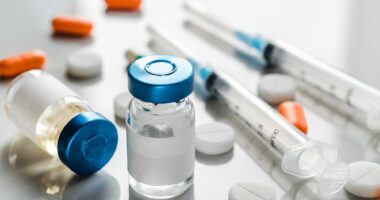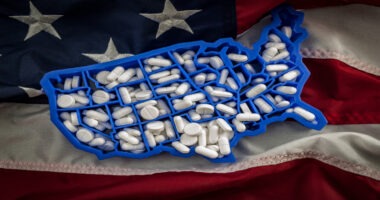Cell and Gene Therapies: How is the Market Faring?
Cell and gene therapies are a niche segment in the global bio/pharmaceutical market. What are leading products, and what are key developments thus far in 2025?
By Patricia Van Arnum, Editorial Director, DCAT, pvanarnum@dcat.org
Leading products
Two cell and gene therapies have reached blockbuster status (defined as achieving sales of $1 billion or more): Novartis’ Zolgensma (onasemnogene abeparvovec-xioi), an adeno-associated virus (AAV) vector-based gene therapy for treating spinal muscular atrophy, a genetic neuromuscular disorder, and Yescarta (axicabtagene ciloleucel) from Kite Pharma, a subsidiary of Gilead Sciences, a CAR T-cell therapy for treating certain forms of B-cell lymphoma and follicular lymphoma. Novartis’ Zolgensma posted 2024 global sales of $1.2 billion, and Gilead’s/Kite Pharma’s Yescarta posted 2024 global sales of $1.6 billion.
Zolgensma is one of two commercial advanced therapies for Novartis. The other is Kymriah (tisagenlecleucel), a CAR T-cell therapy for treating certain forms of acute lymphoblastic leukemia, large B-cell lymphoma, and follicular lymphoma. Kymriah was the first CAR T-cell therapy approved by the US Food and Drug Administration; it was approved in 2017 for treating acute lymphoblastic leukemia and received subsequent FDA approval for its other cancer indications. In 2024, it posted global sales of $443 million.
Cell and gene therapies are part of overall strategic focus of Novartis to invest in technology platforms that it expects will deliver future high-value medcines. These include two established platforms (chemistry and biotherapeutics) plus three advanced platforms (radioligand therapy, xRNA, and gene and cell therapy).
In addition to Yescarta, Gilead’s Kite has another commercial cell therapy, Tecartus (brexucabtagene autoleucel), a CAR T therapy for treating certain forms of mantle cell lymphoma and B-cell precursor acute lymphoblastic leukemia. It posted 2024 sales of $403 million.
Other noteworthy cell and gene therapies on a revenue basis from the large pharma companies include Johnson & Johnson’s/Legend Biotech’s Carvykti (ciltacabtagene autoleucel), a CAR T-cell therapy for treating multiple myeloma, which is nearing blockbuster status, with 2024 sales of $963 million. Also, Bristol-Myers Squibb’s Breyanzi (lisocabtagene maraleucel), a CAR T-cell therapy for treating certain types of B-cell lymphomas, posted 2024 sales of $747 million.
Roche’s/Sarepta Therapeutics’ Elevidys (delandistrogene moxeparvovec-rok), an AAV vector-based gene therapy, is nearing blockbuster status with 2024 sales of $821 million, but the companies reported a recent setback. The gene therapy is approved for treating Duchenne muscular dystrophy (DMD), a genetic disorder characterized by progressive muscle degeneration affecting the skeletal, respiratory, and cardiac muscle. The therapy is approved for treating DMD in patients who are ambulatory or non-ambulatory with specified confirmed DMD gene mutations. Roche formed a licensing pact in 2019 with Sarepta to develop Elevidys, worth up to $2.85 billion (an upfront payment and equity investment of $1.15 billion, up to $1.7 billion in regulatory and sales milestones, plus royalties on net sales).
Earlier this month (June 2025), Sarepta provided a safety update following a second reported case of acute liver failure resulting in death in non-ambulatory individuals. As a result, the company is developing an enhanced immunosuppressive regimen in consultation with a panel of multi-disciplinary clinical experts and engaging with regulators. The company said it will share the panel’s recommendations with FDA and implementation of any new regimen will be subject to FDA guidance and allowance. In addition, Sarepta is temporarily suspending shipments of Elevidys for non-ambulatory patients while the enhanced immunosuppressive regimen is being evaluated, discussed with regulatory bodies, and put in place. The company is also voluntarily pausing dosing in its Envision clinical trial evaluating Elevidys in older ambulatory and non-ambulatory individuals. That trial also serves as the confirmatory trial required under the FDA’s accelerated approval pathway for non-ambulatory patients. The company says the pause will allow for the evaluation of a protocol amendment to incorporate an enhanced immunosuppressive regimen for the non-ambulatory patient cohort and incorporate any additional feedback from FDA.
Key developments thus far in 2025
In terms of new approvals thus far in 2025, FDA has approved two advanced therapies. In April (April 2025), Abeona Therapeutics (Cleveland, Ohio) received FDA approval for Zevaskyn (prademagene zamikeracel), a gene therapy for treating wounds in adult and pediatric patients with recessive dystrophic epidermolysis bullosa, a genetic skin disease. The product is expected to be available in third quarter of 2025.
In March (March 2025), Neurotech Pharmaceuticals (Cumberland, Rhode Island) received FDA approval for Enceltotm (revakinagene taroretcel-lwey), a cell therapy for treating macular telangiectasia Type 2, a neurodegenerative disease of the retina in adults that causes progressive and irreversible vision loss. It uses an encapsulated cell therapy technology designed to continually deliver therapeutic doses of ciliary neurotrophic factor to the retina to assist in slowing the progression of the disease. The product was slated to be available this month (June 2025).
Several companies have products under FDA review, with a FDA action date scheduled for later in 2025. In February (February 2025), FDA accepted for review the biologics license application (BLA) from Ultagenyx (Novato, California), which is seeking accelerated approval for UX111 (rebisufligene etisparvovec), an AAV gene therapy for treating Sanfilippo syndrome Type A, a lysosomal storage disease that primarily affects the brain and is characterized by rapid neurodegeneration with onset in early childhood. The product was originally developed by Abeona Therapeutics and transferred to Ultragenyx to complete development. FDA granted the BLA priority review with a Prescription Drug User Fee Act (PDUFA) action date of August 18, 2025. If approved, the company anticipates potential launch in the second half of 2025.
Precigen (Germantown, Maryland) is seeking FDA approval for PRGN-2012 (zopapogene imadenovec), a gene therapy for treating recurrent respiratory papillomatosis, a neoplastic disease of the upper and lower respiratory tracts caused by infection with the human papillomavirus (HPV) Type 6 or HPV 11. In February (February 2025), FDA accepted the company’s BLA for PRGN-2012 and granted priority review of the BLA with a PFUDA target action date set for August 27, 2025.
Capricor Therapeutics (San Diego, California) is seeking FDA approval for deramiocel, the company’s lead cell therapy candidate, for treating DMD-associated cardiomyopathy. FDA accepted the BLA in March (March 2025) with a PDUFA target action date by FDA of August 31, 2025.
Axogen (Alachua and Tampa, Florida) is seeking FDA approval for its tissue-engineered therapy, Avance nerve graft, a biologically active off-the-shelf processed human nerve allograft for bridging severed peripheral nerves without the co-morbidities associated with a second surgical site. FDA accepted the company’s BLA last November (November 2024) with a PDUFA goal date of September 5, 2025.






